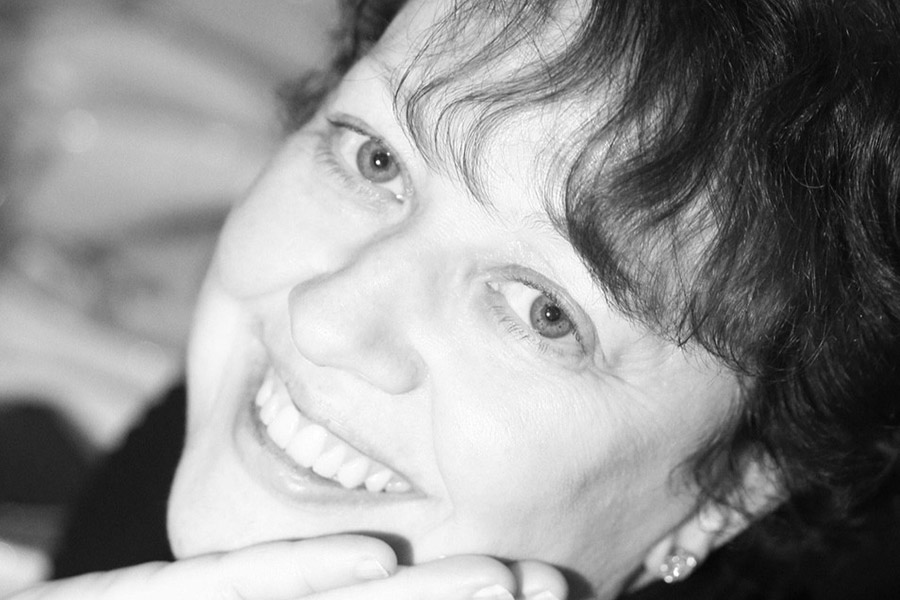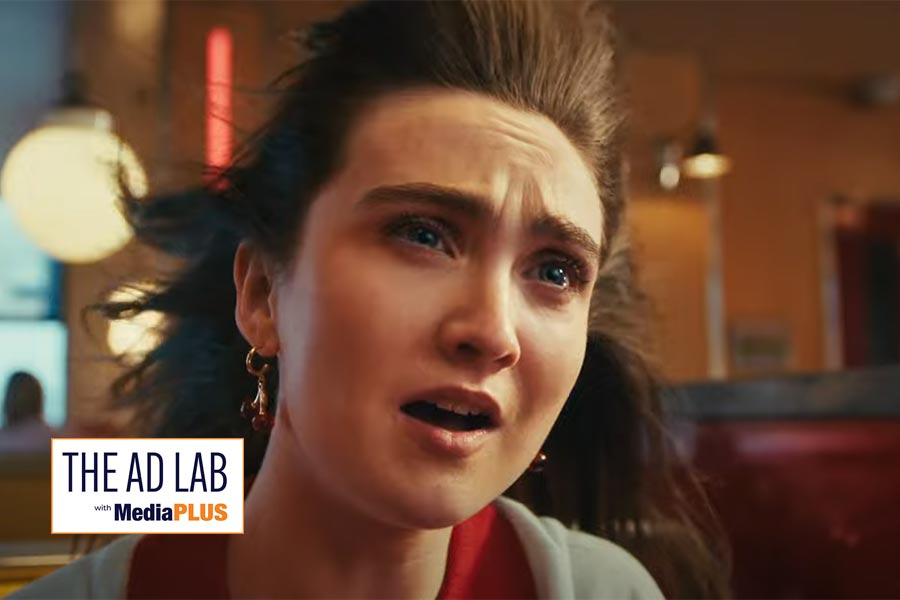Every week, Amárach and Future Proof Insights share exclusive findings from their PRIZM+ ad testing service, showcasing best practice creative advertising in Ireland.
Kellogg’s 'GAA Cúl Camps' campaign delivers a burst of summer energy. Built around a group of kids gathering, playing, and having fun, the ad encourages young families to sign up and take part in one of Ireland’s best-known summer activities.
There’s no build-up, no downtime, just a continuous flow of light-hearted, high-tempo moments grounded in gaelic games and community.
The ad is bright, lively, and consistently upbeat. It uses pace, humour, and sport to grab attention and link Kellogg’s directly with outdoor activity.
Crucially, the brand doesn’t stand apart from the action, it’s integrated. Gear, kits, cereal boxes and the logo all appear naturally in the flow of the ad, tied closely to the message.
Neuroscience tells us it mostly works. Engagement and Emotion are both consistently strong throughout.
Key scenes generate peaks in Impact, Memorisation, and Desire, particularly when branded moments align with on-screen joy. Cognitive Load stays within the optimal range, helping the message land clearly and cleanly.
Best Performing Scenes
Scene 6 (9.7s–11.2s) - Aidan O'Shea
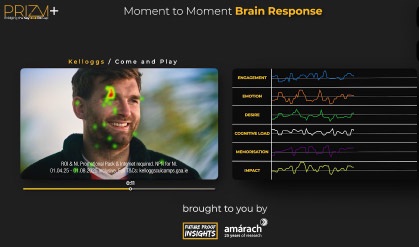
Aidan O’Shea appears mid-ad, standing in his front garden wearing a dressing gown, eating cereal from a branded Kellogg’s bowl.
It’s a quiet, humorous moment that contrasts with the surrounding energy of the ad. As one of the kids casually greets him with, “Hey Aidan,” the celebrity cameo lands gently, adding levity while reinforcing the partnership between Kellogg’s and the GAA Cúl Camps.
The visual is memorable, surprising, and light, and it doesn’t interrupt the pace. It adds a new layer to the narrative.
Why it worked: This is one of the high points of the ad in terms of brain response. It triggers the strongest signals for both emotional impact and memory, most likely because of the appearance of a well-known GAA player and the light humour in the scene.
The branding feels natural, not forced, which helps it land more effectively. What's also important is that viewers were paying close attention here, both emotionally and mentally. That combination makes the moment ideal for making sure the brand message sticks.
Scene 8 (17.0s–20.0s) - final brand lockup
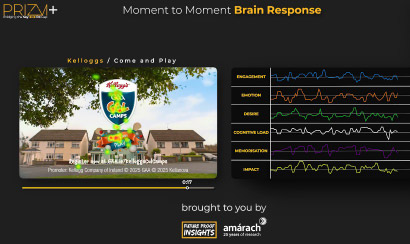
The closing shot shows kids running past the camera in branded Cúl Camps gear, followed by a full-screen call to action and clear Kellogg’s branding. It’s a clean, focused message that wraps the ad.
Why it worked: This scene finishes strong across the board, particularly for Memorisation and Desire. What helps here is timing, the audience sees the brand and the sign-up message right at the end, when their attention is still riding the energy of the previous scenes.
It’s a textbook case of the recency effect: ending on a high note locks the message into memory. The use of visual consistency (kits, logo, message) makes it easy to follow and harder to forget.
Underperforming scenes
Scene 1 (0.0s–2.1s) - gathering the group
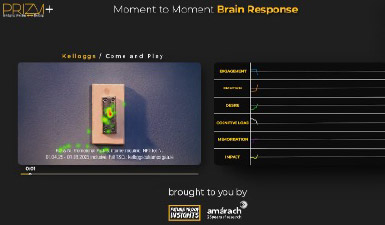
The ad opens with kids ringing doorbells in housing estates to round up their friends.
Why it underdelivered: This is the lowest-performing scene in terms of Engagement and Emotion. There’s little motion, little sound, and no real moment of interest for the viewer to latch onto.
It triggers disengagement and doesn’t create a clear reason to keep watching. For early impact, the ad would benefit from starting with something more dynamic or expressive.
Inverting the process, where the child presses the doorbell and the shot changes to multiple doorbells, would be a more efficient way of conveying this message, as it would give the audience time to establish context before changing the shot several times inside a sub-one second window.
Scene 7 (11.3s–15.9s) - Product placement/pack shots
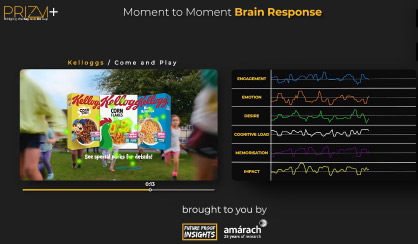
Midway through the sequence, branded cereal boxes and sign-up information are shown as kids continue to play.
Why it underdelivered: This part of the ad marks a dip in Engagement and Emotion, likely because the cueing of the product breaks the viewer from the sequence of events, the content shifts to more literal and instructional.
The shift in tone isn’t supported by a matching emotional cue, so even though the brand and product are front and centre, they don’t fully land. Without stronger audio, character focus, or energy, the viewer’s attention starts to fade just as the message gets more functional.
Behavioural impact: COM-B review
The ad performs strongly on Motivation, particularly among parents of primary-aged children. These are not just the decision-makers for summer activities, they're also responsible for the weekly shop.
The visuals of kids enjoying themselves outdoors clearly activate a positive response, and for this audience, the idea of 'happy, active kids' links directly to parental goals around routine, wellbeing, and screen-free structure during the summer.
Capability also lands well. The use of cereal packs, on-screen registration instructions, and a direct call to action are clear and practical. This is especially important for busy parents who want to know exactly what to do next without searching for extra information.
The area of Opportunity could be stronger. While the ad celebrates child-centred joy, it gives little sense of the social or community value parents might also be looking for.
The absence of adult perspectives - no signposting of support, supervision, or community connection - may cause some hesitation. For parents unfamiliar with the Cúl Camps format, this missing context could reduce intent to act.
Final thought: lessons for marketers
Kellogg’s GAA Cúl Camps ad shows how simplicity, energy, and relevance can deliver a strong advertising moment.
It doesn’t try to be clever for the sake of it. Instead, it focuses on showing joy in action-children playing, celebrating, and connecting through sport. That choice resonates clearly in the data.
By keeping the tone light and the pace high, the ad sustains attention and makes the brand feel part of a bigger story. Importantly, it knows its audience.
The positive neural response among parents of primary school children suggests that the messaging hits home with those who are most likely to book a camp and most likely to buy the cereal in the first place.
The strongest moments come where branding is naturally embedded in feel-good scenes. The Aidan O’Shea cameo and final brand lock-up both show that if you place your logo in the right emotional moment, you don’t need to force it.
Future versions could find small ways to build in adult reassurance or show social value, but these are refinements rather than fixes.
This is a strong example of how to use emotion and structure to move from brand awareness to brand action-without losing the fun.
For more insights from PRIZM+ on how neuroscience drives advertising impact, visit:
https://www.futureproofinsights.ie/prizm-plus





